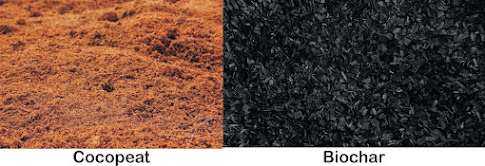Both cocopeat and biochar have uses in agriculture, but there are a number of differences between the two. Cocopeat is mainly used as a planting medium because of its water holding capacity, while biochar in addition to having the ability to hold water like cocopeat also raises soil pH, holds or makes nutrients more available (nutrient retention), and also becomes a colony of soil microbes so that organic matter becomes rapidly decomposed and absorbed by plants. Cocopeat will also decompose in a not too long time like compost while biochar can exist and not decompose for hundreds of years. Under these conditions, biochar is also used to store CO2 (carbon sequenstration) and obtain carbon credits with a carbon sink mechanism.
Choose Biochar or Cocopeat?
With these advantages, choosing biochar would be better. Moreover, the cocopeat can also be used for biochar production. The carbon removal program to reduce the concentration of CO2 in the atmosphere is also in line with the application of the biochar. Increasing global awareness of climate change and global warming makes carbon removal programs that also provide economic benefits from carbon credits likely to continue to increase in the near future. This cannot be done with cocopeat.
Converting cocopeat into biochar is also not difficult, even with a variety of simple (low tech) equipments it can be done. But for a large capacity so that the carbon credit program can run, it requires modern pyrolysis equipment with a large capacity. With this equipment, in addition to biochar production, there is also a number of excess energy that can be used for various purposes, one of which is drying cocopeat before it becomes raw material for biochar with such pyrolysis equipment.








Cool
ReplyDelete